
views
Lifting Objects with Proper Form

Determine if the load is solid or contains liquid. While solids won’t move around when you transport them, weight can shift around if you’re carrying a container with liquid. If you can’t see into the container you’re transporting, jostle it slightly and listen for any liquid inside. If it is a liquid container, be sure not to tip or lean the object while you’re carrying it. Check solid objects for loose or moving parts before you lift them. These may fall off or change how the weight is distributed.
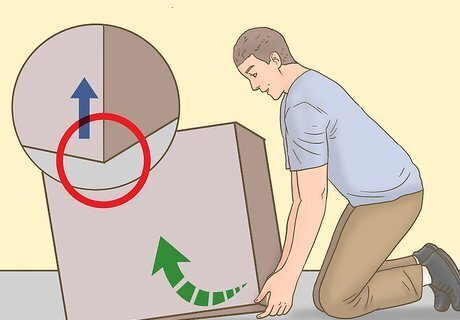
Try picking up 1 corner of the object to get an idea of its weight. Kneel on the ground next to your object and grab the corner with both hands. Try lifting up the object so 1 corner is completely off the ground. By lifting a corner, you can assume what the object’s total weight is and determine if you can lift it on your own. If you can’t lift the corner on your own, don’t attempt to lift the entire object. If you’re trying to lift a tall object, such as a bookshelf, tip it onto its longest side first so the weight is easier to carry.
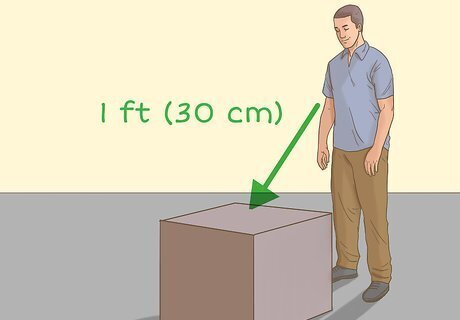
Stand in front of the object with your feet shoulder-width apart. Stand about 1 ft (30 cm) from the object. Keep your feet at or slightly wider than shoulder-width. Position one foot slightly in front of the other so it’s along the side of the object you’re lifting. If you’re lifting an oblong object such as a table, stand on one of the long sides so the weight is easily distributed. Avoid wearing tight-fitting clothes while trying to lift something off of the ground.
Bend your knees and keep your back straight as you lower yourself. Keep your knees bent as you slowly lower your body to the ground. Tighten your abs as you squat down to help keep your body straight and support your lower back. Always keep your knees bent throughout the lift to help maintain your center of balance. If the object isn’t on the ground, bend down as far as you need in order to grab the best handhold.Tip: If you have a medical history of back trouble or pains, ask a partner to help you carry the load.
Grab the load so the weight is evenly distributed between your hands. Find sturdy handholds that you can easily hold onto. Aim to hold the object near the bottom or by its heaviest point so you can easily control the weight. Make sure you have a firm grip so the object doesn’t slip out of your hands. For example, grab a table from the longest side and hold onto the tabletop or box apron underneath. Keep your arms shoulder-width apart to support the weight. If the object has handles, use them if possible. Wear work gloves if you want to get a better grip on your object. Do not attempt to carry the object with only one hand.
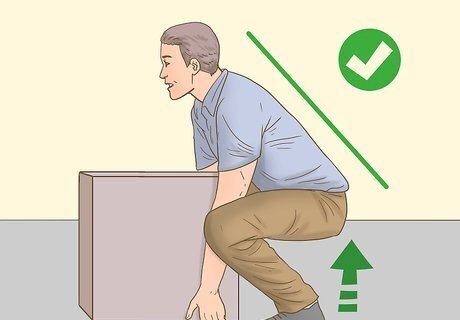
Keep your back straight as you lift the load with your legs. Hug the object tightly against your chest as you straighten your legs. Support as much of the weight as you can just using your legs. Don’t arch or bend your back as you lift the object since it may cause pain. Keep lifting the object until you’re in a standing position. If you start lifting the object but can’t get back into standing position, set it down and ask for help. Don’t carry the object if you’re straining to lift it.
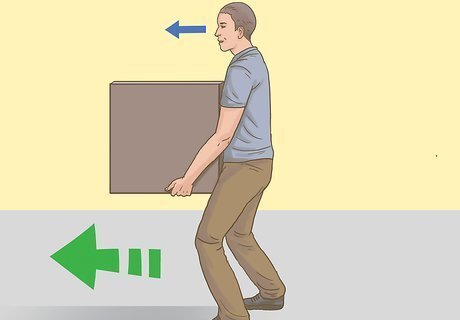
Walk slowly to transport the object. Keep your legs slightly bent to keep your balance. Take small steps so you don’t lose control of the object. Keep your eyes in front of you rather than looking down at the object. When you need to make a turn, shuffle your feet until you’re facing the right way. Avoid twisting your body while you lift the object. If you need to carry the object a long distance, take a short break at the halfway point so you can rest and readjust your grip. Set the object down at waist-level if you can so you can easily pick it up again.
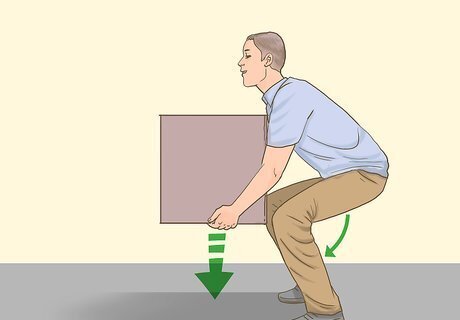
Bend your knees to set the object down. When you reach the area where you need to put the object, keep your back straight and bend your knees into a squat position. Make sure the bottom of the object has full contact with the ground before letting go. If you’re lifting and carrying boxes, set them at waist-level so you don’t have to bend down when you open them.

Ask others to help carry the object if you don’t feel comfortable with the weight. If you’re unsure whether you can carry the object after you test the weight, don’t try to lift it on your own. Instead, ask for a few helpers to carry the object with you to evenly distribute the weight between you. If there isn’t anyone to help you, search for a hand dolly or other mechanical assistance.Tip: If the object has an awkward shape that you can’t get a grip on, such as a long couch, don’t try to lift it on your own.
Using Lifting Equipment at Work
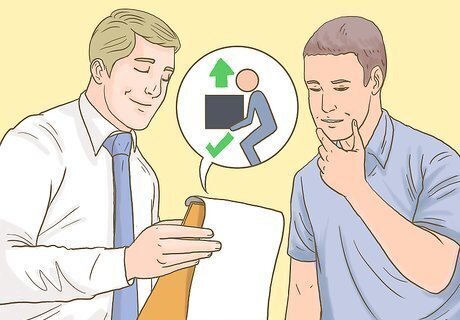
Follow any heavy lifting policies your job has put in place. Check with your supervisor to see what the policies are for transporting heavy objects while you’re at the job. Go over the rules and policies so you don’t hurt you or anyone else while you’re working. For example, if you need to move something on a factory floor and don’t know how, ask somebody else what should be done instead of lifting it on your own. Don’t attempt to lift something if you’re not properly trained with the equipment.
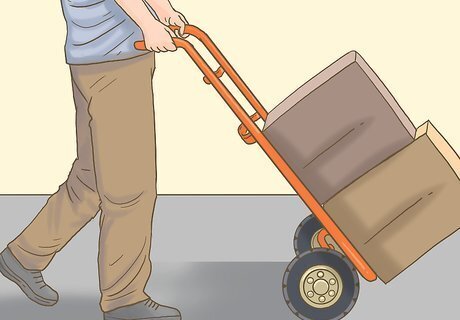
Use a moving dolly if you need to move large appliances. Moving dollies allow you to move large appliances on your own across a flat surface. Put the lip of your moving dolly underneath the object. Strap the object into place on the dolly so it doesn’t fall off. Tip the dolly backward toward you to lift the object. Roll the object to the area you want to set it down and pull the bottom out. Ask for help if you can’t tip the object back on your own. Moving dollies can be rented from most hardware stores.
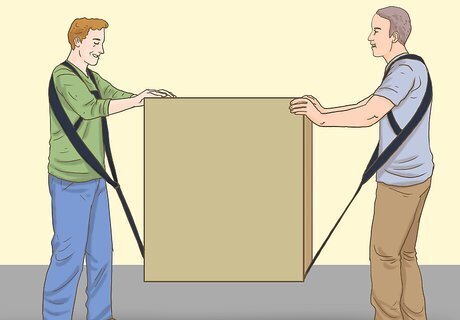
Lift heavy objects with a shoulder dolly if you’re with a partner. Shoulder dollies are harnesses worn by 2 people so they can carry a heavy object between them. Slip the harness on over your head so it makes an X in the middle of your back and so the metal buckle is at waist level. Have a person stand on each side of the object put the lifting strap underneath. Hold onto each side of the object and lift with your legs at the same time. Shoulder dollies can be purchased online. Shoulder dollies work well for large and bulky furniture, such as bookcases or desks.Tip: Make sure each person has a firm grip on the object so it doesn't fall off the strap. For an especially large object, like a box spring or a large cabinet, have another person on the side to help support the middle.
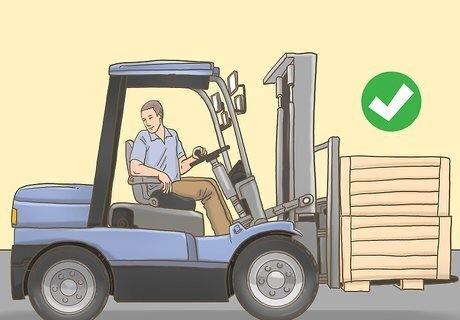
Use a forklift or hand jack if you’re lifting pallets. Many warehouses or businesses that require heavy lifting have forklifts or pallet jacks to transport heavier loads. Line the tines of your forklift or pallet jack with the openings on the sides of the pallet. Either pull the lever on the forklift that raises the load, or crank down on the handle of a manual pallet jack to lift the load. Check if your company or area requires a permit for driving a forklift. Make sure the weight is evenly distributed on the pallet so nothing falls off or tips over.


















Comments
0 comment